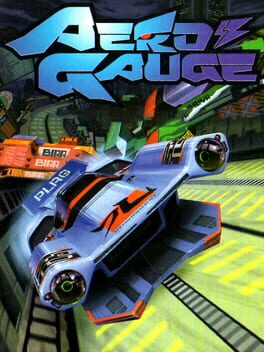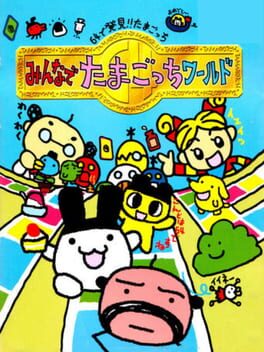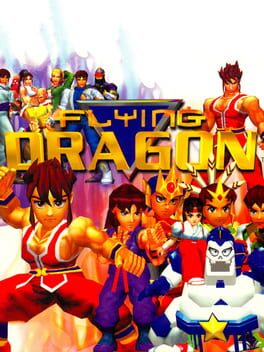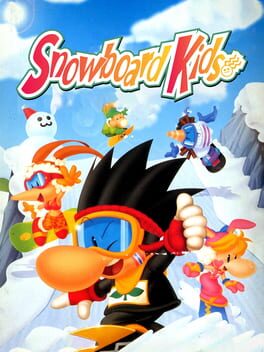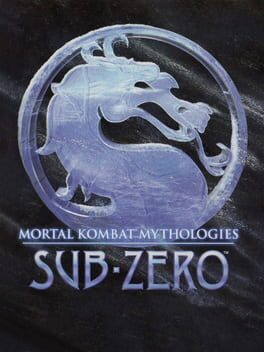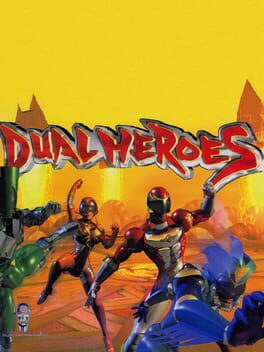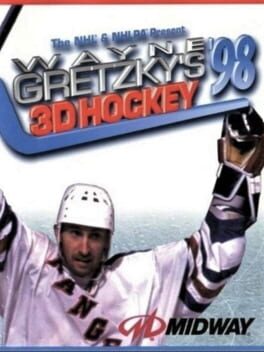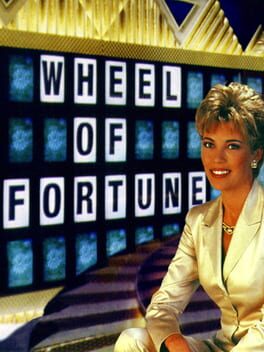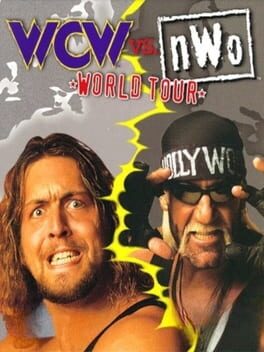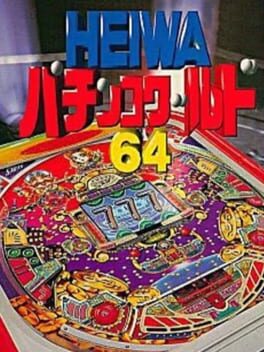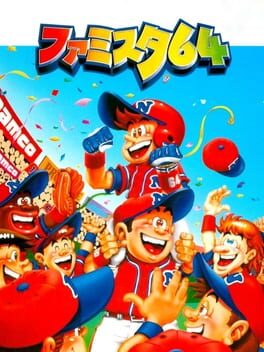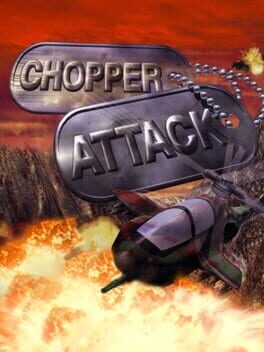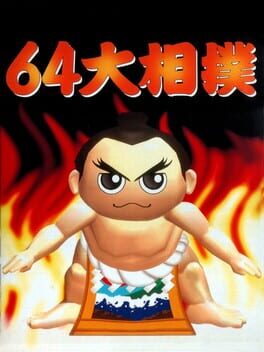Cube1701
1997
A futuristic racing game, on the same lines of Wipeout, F-Zero and Extreme-G. N64 gave AeroGauge an abysmal score of 10% so I was expecting something especially dreadful from it, but I kind of enjoy it. There are some ways where it’s near enough broken and, like many N64 racers, is light on content, but this is close to being a good game.
AeroGauge does have some extreme problems. The AI players are the biggest one due to how they’re essentially “perfect”, from all of them pulling off the boost start to just all doing the perfect route throughout the level. One slight mistake and you’ll spend the whole race in last place.
The boost start itself is needlessly complicated (hold A+B before the race starts, let go of B when “go” is said) as well as the in-race boosts (hold Z+A, drift turn, then let go of Z+A and press A), both feeling like cheat codes more than part of the game. These issues fundamentally break playing against the computer.
However, the racing itself is just a lot of fun. You don’t drive or hover, you fly through the levels. This separates it from the other sci-fi racing games, and the game managed to be quite exhilarating, even in the fairly pointless time trial qualifying rounds before each race.
Oh, and one of the unlockable vehicles is a Nintendo 64 controller, which is a really neat touch – especially as the analogue stick moves as you tilt it.
AeroGauge definitely has major issues, but there are some neat ideas here and it really needed a bit more development time.However, the racing itself is just a lot of fun. You don’t drive or hover, you fly through the levels. This separates it from the other sci-fi racing games, and the game managed to be quite exhilarating, even in the fairly pointless time trial qualifying rounds before each race.
Oh, and one of the unlockable vehicles is a Nintendo 64 controller, which is a really neat touch – especially as the analogue stick moves as you tilt it.
AeroGauge definitely has major issues, but there are some neat ideas here and it really needed a bit more development time.
AeroGauge does have some extreme problems. The AI players are the biggest one due to how they’re essentially “perfect”, from all of them pulling off the boost start to just all doing the perfect route throughout the level. One slight mistake and you’ll spend the whole race in last place.
The boost start itself is needlessly complicated (hold A+B before the race starts, let go of B when “go” is said) as well as the in-race boosts (hold Z+A, drift turn, then let go of Z+A and press A), both feeling like cheat codes more than part of the game. These issues fundamentally break playing against the computer.
However, the racing itself is just a lot of fun. You don’t drive or hover, you fly through the levels. This separates it from the other sci-fi racing games, and the game managed to be quite exhilarating, even in the fairly pointless time trial qualifying rounds before each race.
Oh, and one of the unlockable vehicles is a Nintendo 64 controller, which is a really neat touch – especially as the analogue stick moves as you tilt it.
AeroGauge definitely has major issues, but there are some neat ideas here and it really needed a bit more development time.However, the racing itself is just a lot of fun. You don’t drive or hover, you fly through the levels. This separates it from the other sci-fi racing games, and the game managed to be quite exhilarating, even in the fairly pointless time trial qualifying rounds before each race.
Oh, and one of the unlockable vehicles is a Nintendo 64 controller, which is a really neat touch – especially as the analogue stick moves as you tilt it.
AeroGauge definitely has major issues, but there are some neat ideas here and it really needed a bit more development time.
Tamagotchi World (or Discovered at 64! Tamagotchi Everyone at Tamagotchi World for the full translation of the name) is a board game-based video game. Players take turns rolling dice, land on spaces which help or hinder progression and every now and then take part in solo or 4 player minigames. It sounds a lot like Mario Party, but before Mario Party – it’s even made by Hudson Soft.
This isn’t just about moving around the board, you have to raise your Tamagotchi as well. After your move, you can input options based on the classic devices such as feed, play, heal and clean poop. You need to maintain your Tamagotchi’s status bars as well as gain points to level up – reaching the max wins you the game.
Sometimes your Tamagotchi will refuse what to do, so you’ll need to discipline them. You also have limited credits, which are refilled once you get back to the starting point. It’s an interesting mechanic that gives you a lot more to think about other than rolling and moving.
When players land on certain spots, a minigame will be triggered. There are only 10 minigames, but they wouldn’t feel out of place in Mario Party (one even has you spinning the analogue stick as fast as you can).
This is an interesting precursor to Mario Party, and the Tamagotchi elements, while still entirely luck based, make it more than just a roll and move game.
This isn’t just about moving around the board, you have to raise your Tamagotchi as well. After your move, you can input options based on the classic devices such as feed, play, heal and clean poop. You need to maintain your Tamagotchi’s status bars as well as gain points to level up – reaching the max wins you the game.
Sometimes your Tamagotchi will refuse what to do, so you’ll need to discipline them. You also have limited credits, which are refilled once you get back to the starting point. It’s an interesting mechanic that gives you a lot more to think about other than rolling and moving.
When players land on certain spots, a minigame will be triggered. There are only 10 minigames, but they wouldn’t feel out of place in Mario Party (one even has you spinning the analogue stick as fast as you can).
This is an interesting precursor to Mario Party, and the Tamagotchi elements, while still entirely luck based, make it more than just a roll and move game.
The first Olympic title on the N64 – and, curiously, the last one on a Nintendo platform until Mario & Sonic at the Olympic Games. Olympic video games are usually collection of simple games based around Olympic Sports, often catering for multiplayer – and while Nagano does the first, it doesn’t really focus on multiplayer.
There are 10 sports – some with a few variations and are slow and tedious at best, and outright uninteresting at worst. The Skiing and snowboarding slaloms are best, but they’re both slow with some slight turns as you go through gates. The halfpipe is probably the worst, which has you copying input commands before you jump and your snowboarder doing a trick.
The AI is also insanely good at the game, so unless you manage to master the unclear and terrible controls, you’ll be happy if you make it to 15th place. The snowboard slalom is an odd exception, as I fell over a few dozen times and still won by a significant margin.
The massive let down in the multiplayer side is the complete lack of any simultaneous events. You all have to take turns setting records. Speed Skating is against an opponent, but in multiplayer you all race against a CPU player. Only curling, which is a turn-based sport, has any kind of interaction between players. On top of that, from what I can tell, each player still needs their own controller.
Nagano Winter Olympics is a shoddy sports minigame collection with poor controls and a terrible multiplayer mode.
There are 10 sports – some with a few variations and are slow and tedious at best, and outright uninteresting at worst. The Skiing and snowboarding slaloms are best, but they’re both slow with some slight turns as you go through gates. The halfpipe is probably the worst, which has you copying input commands before you jump and your snowboarder doing a trick.
The AI is also insanely good at the game, so unless you manage to master the unclear and terrible controls, you’ll be happy if you make it to 15th place. The snowboard slalom is an odd exception, as I fell over a few dozen times and still won by a significant margin.
The massive let down in the multiplayer side is the complete lack of any simultaneous events. You all have to take turns setting records. Speed Skating is against an opponent, but in multiplayer you all race against a CPU player. Only curling, which is a turn-based sport, has any kind of interaction between players. On top of that, from what I can tell, each player still needs their own controller.
Nagano Winter Olympics is a shoddy sports minigame collection with poor controls and a terrible multiplayer mode.
1997
A fighting game that feels like it was built with home consoles in mind. This features a more cartoon style than most and adds RPG elements into the mix in the form of items to equip and upgrade. This is a very promising system, but ultimately the fighting itself lets it down.
To progress, you repeatedly play tournaments. You’ll get experience for your items as well as money to buy new ones (which can include new special moves). While some of these include clothing, it only affects your stats, not the visuals of your character. As you play more matches, these will “evolve” into new items.
It creates a good incentive to play the story mode repeatedly, even if it does feel the same every time – not even the text dialogue at the start of each match changes. There are a bunch of other modes, such as practice and multiplayer modes, so there are plenty of things to do – it’s just that the gameplay itself isn’t up to scratch for it.
But Flying Dragon also includes a second fighting game.
An additional mode, called “Virtual Hiryu” is also available as a much more traditional fighting game. This features a different cast of characters in a different visual style – more generic taller characters. This lacks the RPG elements but does have other features such as a “grading” system telling you what to do.
The fighting feels very similar and still isn’t very good – this one felt even easier to cheese with button mashing, too. In a way, this feels like they didn’t have enough confidence in their main mode and wanted a “normal” way to play as well.
Flying Dragon has some interesting features, and is essentially two games in one – the second containing more features and options than most other fighters so far on the N64. It’s just unfortunate that it’s not that fun to play.
To progress, you repeatedly play tournaments. You’ll get experience for your items as well as money to buy new ones (which can include new special moves). While some of these include clothing, it only affects your stats, not the visuals of your character. As you play more matches, these will “evolve” into new items.
It creates a good incentive to play the story mode repeatedly, even if it does feel the same every time – not even the text dialogue at the start of each match changes. There are a bunch of other modes, such as practice and multiplayer modes, so there are plenty of things to do – it’s just that the gameplay itself isn’t up to scratch for it.
But Flying Dragon also includes a second fighting game.
An additional mode, called “Virtual Hiryu” is also available as a much more traditional fighting game. This features a different cast of characters in a different visual style – more generic taller characters. This lacks the RPG elements but does have other features such as a “grading” system telling you what to do.
The fighting feels very similar and still isn’t very good – this one felt even easier to cheese with button mashing, too. In a way, this feels like they didn’t have enough confidence in their main mode and wanted a “normal” way to play as well.
Flying Dragon has some interesting features, and is essentially two games in one – the second containing more features and options than most other fighters so far on the N64. It’s just unfortunate that it’s not that fun to play.
1997
In the tutorial, Snowboard Kids makes it clear that this is a racing game without a brake button – it also lacks an acceleration button. Gravity does all the work, leaving you to focus on turning, items and tricks. It has a charming visual style and nice slopes to snowboard down.
The turning mechanics are quite unique to Snowboard Kids, as tilting backwards allows for sharper turns. If you hold A to prepare for a jump, you will be unable to turn until you’ve finished jumping – you can also perform tricks to earn coins.
These coins (along with those on the tracks) are used to collect weapons and items, and you have one slot for each. I quite like this mechanic, although I found them to be quite unbalanced – some weapons, such as the parachute, sends people flying into the air and keeps them there for a bit too long. There’s also an unavoidable pan item that squashes all of your opponents.
This seems to create a situation where one player will often end up in front, with the other three pelting each other, unable to catch up with the leader. It’s a shame as I do like the game’s mechanics, as well as the levels.
Instead of lots of similar looking snow tracks, Snowboard Kids mixes things up with other themes, with the cutesy style managing to not make snowboarding on desert slopes look odd. There are six tracks to start with initially, with three more to unlock.
When you reach the end of the slope, a chair lift will take you back up to the top – however, the barrier will only open if a chair is ready. If second place isn’t ready, they’ll bonk off the railing just after 1st place enters and 3rd place can sneak in while they recover. It’s a nice little mechanic.
There are a few minigames to try out as well. One has you rushing down a slope quickly using the hard-to-steer fan items, one is a target practice challenge and the last is a stunt run – although that doesn’t work very well.
Snowboard Kids is a charming game. It’s not one of the best games on the system, but it’s still worth checking out.
The turning mechanics are quite unique to Snowboard Kids, as tilting backwards allows for sharper turns. If you hold A to prepare for a jump, you will be unable to turn until you’ve finished jumping – you can also perform tricks to earn coins.
These coins (along with those on the tracks) are used to collect weapons and items, and you have one slot for each. I quite like this mechanic, although I found them to be quite unbalanced – some weapons, such as the parachute, sends people flying into the air and keeps them there for a bit too long. There’s also an unavoidable pan item that squashes all of your opponents.
This seems to create a situation where one player will often end up in front, with the other three pelting each other, unable to catch up with the leader. It’s a shame as I do like the game’s mechanics, as well as the levels.
Instead of lots of similar looking snow tracks, Snowboard Kids mixes things up with other themes, with the cutesy style managing to not make snowboarding on desert slopes look odd. There are six tracks to start with initially, with three more to unlock.
When you reach the end of the slope, a chair lift will take you back up to the top – however, the barrier will only open if a chair is ready. If second place isn’t ready, they’ll bonk off the railing just after 1st place enters and 3rd place can sneak in while they recover. It’s a nice little mechanic.
There are a few minigames to try out as well. One has you rushing down a slope quickly using the hard-to-steer fan items, one is a target practice challenge and the last is a stunt run – although that doesn’t work very well.
Snowboard Kids is a charming game. It’s not one of the best games on the system, but it’s still worth checking out.
Traditional fighting games like Mortal Kombat aren’t platformers. In order to combine Mortal Kombat with a platformer, you’ll need to put in some serious work to bring out the strengths of both genres. Making B turn the character around does not solve any issues with trying to make a platformer out of Mortal Kombat. On top of being ridiculous for a platform game, it also makes fighting a nightmare.
With the hassle of using up to jump, levels need to be properly designed around this compromised way of platforming. MK Mythologies doesn’t cater for this, though, instead taking the most annoying tropes of the worst NES platformers and adds some of its own.
After you punch up the first enemy, you’ll walk down a corridor and be squashed by a pillar and be instantly killed. Fighting past the first enemy again, you’ll time your run and dash past it – only to be killed by a second pillar. The third time, you fight again and try to stop before the second pillar. It will clip you, but you’ll be alive – but the recoil will send you under the first pillar and you’ll be crushed and killed again.
The game is a trial-and-error experience, getting a bit further each time. I used save states pretty quickly but it was still incredibly frustrating. And that’s just the first level – the second is much, much worse.
Level two consists of lots of tiny platforms. The screen is too far zoomed in to see much, and the camera doesn’t scroll how you would like, so you have to make many blind jumps. Some platforms will also collapse. Another really frustrating things are platforms that move towards and away from the camera, so you can only jump on them when they’re in “line” with the 2D aspects – which is quite difficult to see.
As you slowly progress, you’ll encounter doors that need keys. You’ll need to explore elsewhere in the level to find the keys. Sometimes, these paths are hidden off screen. For example, there’s a bridge that collapses when you stand on it, get past and carry on and you’ll find a locked door. To find the key, you have to jump into the empty space under the collapsing bridge – something that usually kills you.
Oh, and sometimes getting to the door before finding the key for it means that you can’t go back to where the key is, so you have to die.
Even using cheats, I couldn’t bear to finish Sub Zero. The level layouts are atrocious and there’s really no enjoyment to get out of the game and progression just feels like you accidentally stumbled on the correct path and doesn’t feel rewarding.
This isn’t just one of the worst games on the N64 – it’s one of the worst 2D platformers.
With the hassle of using up to jump, levels need to be properly designed around this compromised way of platforming. MK Mythologies doesn’t cater for this, though, instead taking the most annoying tropes of the worst NES platformers and adds some of its own.
After you punch up the first enemy, you’ll walk down a corridor and be squashed by a pillar and be instantly killed. Fighting past the first enemy again, you’ll time your run and dash past it – only to be killed by a second pillar. The third time, you fight again and try to stop before the second pillar. It will clip you, but you’ll be alive – but the recoil will send you under the first pillar and you’ll be crushed and killed again.
The game is a trial-and-error experience, getting a bit further each time. I used save states pretty quickly but it was still incredibly frustrating. And that’s just the first level – the second is much, much worse.
Level two consists of lots of tiny platforms. The screen is too far zoomed in to see much, and the camera doesn’t scroll how you would like, so you have to make many blind jumps. Some platforms will also collapse. Another really frustrating things are platforms that move towards and away from the camera, so you can only jump on them when they’re in “line” with the 2D aspects – which is quite difficult to see.
As you slowly progress, you’ll encounter doors that need keys. You’ll need to explore elsewhere in the level to find the keys. Sometimes, these paths are hidden off screen. For example, there’s a bridge that collapses when you stand on it, get past and carry on and you’ll find a locked door. To find the key, you have to jump into the empty space under the collapsing bridge – something that usually kills you.
Oh, and sometimes getting to the door before finding the key for it means that you can’t go back to where the key is, so you have to die.
Even using cheats, I couldn’t bear to finish Sub Zero. The level layouts are atrocious and there’s really no enjoyment to get out of the game and progression just feels like you accidentally stumbled on the correct path and doesn’t feel rewarding.
This isn’t just one of the worst games on the N64 – it’s one of the worst 2D platformers.
1997
While Chameleon Twist came out in America and Europe, I played a Japanese copy with an English translation patch. The western versions seem to be based on an earlier build, perhaps sent off to the localisation teams before the game was fully ready. The Japanese version has some more challenging rooms (for example, one room with lots of difficult platforms is just an empty room with collectables in the other versions), the multiplayer powerups added into the main game and some unlockable characters.
The story is pretty much non-existent. A regular chameleon sees the white rabbit from Alice in Wonderland jumping into a pot and decides to follow, turning into the big headed thing in the game. From there, you go through the levels, killing everything in your path.
When you start the game, you’ll test out the moves. The tongue is very impressive as you can move it as it extends. I was expecting lots of puzzle use with it, but unfortunately the game isn’t very inventive.
The tongue is used for four moves. The first lets you swallow enemies to spit them out as bullets Then you can latch onto poles, from there, you can pull yourself towards it or spin around. Finally, you can push yourself upwards for a high jump that’s very awkward to use. You don’t gain any extra abilities and it doesn’t have the usage of Mario’s move set to keep itself interesting across the game.
Being able to move the tongue seems more like something added just to combat the terrible aiming in the game.
The biggest difficulty in Chameleon Twist is the camera. Moving it twists it in really strange ways and it’s very difficult to judge jumps and to target where you’re shooting. The game itself is quite simple – especially due to how few moves you have – although to get the boss rush mode, you have to find lots of the crowns hidden throughout the levels.
Chameleon Twist is a nice start for a game. The game needs a bit more variety and a much better camera – hopefully these are fixed in the sequel.
The story is pretty much non-existent. A regular chameleon sees the white rabbit from Alice in Wonderland jumping into a pot and decides to follow, turning into the big headed thing in the game. From there, you go through the levels, killing everything in your path.
When you start the game, you’ll test out the moves. The tongue is very impressive as you can move it as it extends. I was expecting lots of puzzle use with it, but unfortunately the game isn’t very inventive.
The tongue is used for four moves. The first lets you swallow enemies to spit them out as bullets Then you can latch onto poles, from there, you can pull yourself towards it or spin around. Finally, you can push yourself upwards for a high jump that’s very awkward to use. You don’t gain any extra abilities and it doesn’t have the usage of Mario’s move set to keep itself interesting across the game.
Being able to move the tongue seems more like something added just to combat the terrible aiming in the game.
The biggest difficulty in Chameleon Twist is the camera. Moving it twists it in really strange ways and it’s very difficult to judge jumps and to target where you’re shooting. The game itself is quite simple – especially due to how few moves you have – although to get the boss rush mode, you have to find lots of the crowns hidden throughout the levels.
Chameleon Twist is a nice start for a game. The game needs a bit more variety and a much better camera – hopefully these are fixed in the sequel.
1997
I don’t quite understand the name of this one – there’s no “dual” aspect to anything of this game. Did someone mistype “Duel Heroes”? Anyway, Dual Heroes is often stated as the worst fighting game on the N64, originally scoring 28% at N64 Magazine. However, Dual Heroes is quite fascinating as it has some really interesting features – which caused N64’s magazine score to bump up to 50% once they could understand what those features were in their English version review.
Now, the fighting mechanics are pretty atrocious. Fighters don’t feel very different and they all look like rejected Power Rangers with inflatable butts, with rather ugly designs. Special moves don’t feel very special and it’s quite simple that two of the buttons can be “Punch and kick” or “kick and block” and you can still have blank ones. There’s also a 3D move – which isn’t just a fancy dodge like Midway’s fighting games, but holding the button lets you move around completely in 3D. However, it also breaks the game.
When you move around in 3D, you move very fast. Human players will have difficulty landing a hit on you, and the AI can’t manage it at all. On top of that, in their attempt to try and hit you, they’ll often run off the edge of the map (if there are no walls). This means you can cheese any AI fight by running behind them, punching them and just running away until they throw themselves off or the time runs out.
Dual Heroes does have some fascinating features that I think modern fighting games should use. One is a “virtual opponent”. These are a list of opponents to play the game against – you don’t fight them directly, they pick a character from a game. They all have different tactics and will play in different ways, rather than one set way for each fighter to react.
On top of that, you can fight your own. There is a “robot” you can train by fighting against it – you have to teach it to use each character – and it will fight in your style. You can choose to have it fight the virtual opponents or (using memory cards) another person’s robot. This feature was implemented by the Super Smash Bros series, however it requires an amiibo of each character you want to use.
With online systems now, this robot feature (and virtual opponents) seems like great features that will be much better off with sharing things online (not to mention in a better fighting game).
Dual Heroes isn’t a good game, but it has some really great ideas that deserve to be tried again.
Now, the fighting mechanics are pretty atrocious. Fighters don’t feel very different and they all look like rejected Power Rangers with inflatable butts, with rather ugly designs. Special moves don’t feel very special and it’s quite simple that two of the buttons can be “Punch and kick” or “kick and block” and you can still have blank ones. There’s also a 3D move – which isn’t just a fancy dodge like Midway’s fighting games, but holding the button lets you move around completely in 3D. However, it also breaks the game.
When you move around in 3D, you move very fast. Human players will have difficulty landing a hit on you, and the AI can’t manage it at all. On top of that, in their attempt to try and hit you, they’ll often run off the edge of the map (if there are no walls). This means you can cheese any AI fight by running behind them, punching them and just running away until they throw themselves off or the time runs out.
Dual Heroes does have some fascinating features that I think modern fighting games should use. One is a “virtual opponent”. These are a list of opponents to play the game against – you don’t fight them directly, they pick a character from a game. They all have different tactics and will play in different ways, rather than one set way for each fighter to react.
On top of that, you can fight your own. There is a “robot” you can train by fighting against it – you have to teach it to use each character – and it will fight in your style. You can choose to have it fight the virtual opponents or (using memory cards) another person’s robot. This feature was implemented by the Super Smash Bros series, however it requires an amiibo of each character you want to use.
With online systems now, this robot feature (and virtual opponents) seems like great features that will be much better off with sharing things online (not to mention in a better fighting game).
Dual Heroes isn’t a good game, but it has some really great ideas that deserve to be tried again.
Yearly sports updates are tricky things to review, as some can bring big improvements, some minor improvements and some just update the stats. The first N64 Wayne Gretzky’s 3D Hockey was a decent game and this is no different – literally. Everything feels the same and there don’t seem to be any additional options or features for the main game.
Other than player stats, the only thing I could find was that the practice mode has a few extra options, were you can choose between shooting, offence and defence. These just change how many players are on each team.
If you want to try out one of the Wayne Gretzky’s 3D Hockey games, you may as well play this version, but it doesn’t really offer anything over the previous.
Other than player stats, the only thing I could find was that the practice mode has a few extra options, were you can choose between shooting, offence and defence. These just change how many players are on each team.
If you want to try out one of the Wayne Gretzky’s 3D Hockey games, you may as well play this version, but it doesn’t really offer anything over the previous.
1997
With a score of 17% from N64 magazine, I was expecting something truly atrocious from this. Yet, despite the wonky looking graphics, it does a good job at what it’s supposed to do. It’s your own episode of Wheel of Fortune in an N64 cart.
Wheel of Fortune is essentially a fancy game show version of hangman. You spin the wheel and guess a letter. If it exists in the words, you’ll get the money corresponding to the wheel and if you’re wrong, play passes to the next contestant.
The wheel is a big element of luck and some of them can make you lose a turn or take away all the money you’ve earned that round.
The N64 version is a little bit ugly, but still creates the feel of a studio pretty well. With options for pass and play or having different controllers, it’s also an easy game to play with others, including non-gamers. I got quite a bit of enjoyment from this with my girlfriend, and she even asked to keep the game handy as it’s fun for a quick round every now and then.
Wheel of Fortune is essentially a fancy game show version of hangman. You spin the wheel and guess a letter. If it exists in the words, you’ll get the money corresponding to the wheel and if you’re wrong, play passes to the next contestant.
The wheel is a big element of luck and some of them can make you lose a turn or take away all the money you’ve earned that round.
The N64 version is a little bit ugly, but still creates the feel of a studio pretty well. With options for pass and play or having different controllers, it’s also an easy game to play with others, including non-gamers. I got quite a bit of enjoyment from this with my girlfriend, and she even asked to keep the game handy as it’s fun for a quick round every now and then.
It took a while for the N64 to get its first wrestling game, although it ended up getting a LOT after this one. It’s quite difficult to judge these properly as WWF No Mercy essentially invalidated all the other wrestling games on the console and set the standard going forward.
For the first on the N64, it does a good job. The gameplay works well enough, although putting the special moves on the control stick is a very odd move (you move around with the D-pad). You punch, kick and grapple. That said, individual matches do go on for far too long – upwards of 20 minutes.
But there’s not much to the game. There aren’t that many wrestlers and there are just a few basic modes, the first of which is a 5v5 where they duke it out one at a time. If one wrestler wins, they fight the opponent’s next.
For the first on the N64, it does a good job. The gameplay works well enough, although putting the special moves on the control stick is a very odd move (you move around with the D-pad). You punch, kick and grapple. That said, individual matches do go on for far too long – upwards of 20 minutes.
But there’s not much to the game. There aren’t that many wrestlers and there are just a few basic modes, the first of which is a 5v5 where they duke it out one at a time. If one wrestler wins, they fight the opponent’s next.
Pachinko, from what I understand is a “totally not gambling” gambling machine popular in Japan. It seems to be a mixture of a pinball machine, 10p machine and a slot machine. As you buy tokens and win prizes instead of cash, it skirts around gambling laws in Japan.
You buy balls and then use a dial to aim them into the machine, where they tumble down and activate the various parts of the slot machine, hoping the hit the jackpot.
You can walk around three pachinko parlours. Even though these are built in 3D, it controls like a Myst-style point and click game as you turn 90 degrees and only stand in specific locations. The graphics are terrible with really bad tiling everywhere and humans that look like barbie dolls with shrunken heads.
The machines don’t fare much better. As they’re based on real machines and not designed specifically for the N64, they try to fit in far more detail so they just look like a blur. You can tilt them for a slightly different view at the vomit-inducing mess.
Also, while pachinko is really simple, the controls are terrible. The only actual control is the dial, but all the variation is within one segment of the analogue stick, meaning you have very little control.
And, at the end of the day, this is the kind of thing you’ll find in a crummy seaside arcade but with the tickets and prizes removed. What little fun is removed, the whole risk is removed and the whole point – winning prizes is just there. A game version could have cosmetics or something, perhaps a room to decorate, but there’s nothing.
It’s a pointless game.
You buy balls and then use a dial to aim them into the machine, where they tumble down and activate the various parts of the slot machine, hoping the hit the jackpot.
You can walk around three pachinko parlours. Even though these are built in 3D, it controls like a Myst-style point and click game as you turn 90 degrees and only stand in specific locations. The graphics are terrible with really bad tiling everywhere and humans that look like barbie dolls with shrunken heads.
The machines don’t fare much better. As they’re based on real machines and not designed specifically for the N64, they try to fit in far more detail so they just look like a blur. You can tilt them for a slightly different view at the vomit-inducing mess.
Also, while pachinko is really simple, the controls are terrible. The only actual control is the dial, but all the variation is within one segment of the analogue stick, meaning you have very little control.
And, at the end of the day, this is the kind of thing you’ll find in a crummy seaside arcade but with the tickets and prizes removed. What little fun is removed, the whole risk is removed and the whole point – winning prizes is just there. A game version could have cosmetics or something, perhaps a room to decorate, but there’s nothing.
It’s a pointless game.
1997
Yet another Japanese only baseball game, this time from Namco. This one, however, features a different style of batting and some other fun features – such as a Namco-themed stadium.
Instead of very specifically aiming the bat, batting in this game is focused far more on timing, with you just moving slightly to the side and swinging at the right time. I was able to get to grips with this a lot more, and even scored some runs.
Once the ball has been hit, the game switches to a completely different 2D visual style. This works surprisingly well, with your players running and diving for the ball. I felt more in control of the game and based on that, I was able to enjoy this one.
Family Stadium also has a bunch of minigames, which serve as great practice and training for each individual part of the game – one for hitting far, one for hitting specific targets, one for catching balls and so on. They’re fun and can be played solo or with others.
There are also a couple of minigames which aren’t really related to baseball (or practicing one element of it), but are still fun. There’s one where you have to pump up a balloon before an opponent, one where you have to trace a picture and, what seems the most random, a 2D snowball fight minigame.
Family Stadium is the first baseball game that I’ve had some fun with – although I’m not sure if those fully into baseball would agree that it’s better.
Instead of very specifically aiming the bat, batting in this game is focused far more on timing, with you just moving slightly to the side and swinging at the right time. I was able to get to grips with this a lot more, and even scored some runs.
Once the ball has been hit, the game switches to a completely different 2D visual style. This works surprisingly well, with your players running and diving for the ball. I felt more in control of the game and based on that, I was able to enjoy this one.
Family Stadium also has a bunch of minigames, which serve as great practice and training for each individual part of the game – one for hitting far, one for hitting specific targets, one for catching balls and so on. They’re fun and can be played solo or with others.
There are also a couple of minigames which aren’t really related to baseball (or practicing one element of it), but are still fun. There’s one where you have to pump up a balloon before an opponent, one where you have to trace a picture and, what seems the most random, a 2D snowball fight minigame.
Family Stadium is the first baseball game that I’ve had some fun with – although I’m not sure if those fully into baseball would agree that it’s better.
1997
Chopper Attack (or Wild Choppers) is a game that’s clearly inspired by the [Terrain] Strike series of games. It’s a helicopter shoot-’em-up across eight missions. Each mission will give you certain enemies to destroy, although some you have to wipe out everything.
The controls make use of the N64 controller well – the C-buttons move while the analogue stick aims (although there’s no option to disable inverted aiming). There is, however, one important feature of a helicopter missing: controlling altitude. You’ll automatically move up based on terrain. Enemies don’t have the same limitations, so you have to awkwardly try to aim at them – a big problem because the crosshair isn’t pointing at where you’ll fire.
Enemies range from other aircraft to tanks, with soldiers also trying to take potshots at you. One really frustrating enemy is a giant Rambo-like man that grabs of your helicopter, messing your controls and missiles up. On top of your shield, you also need to keep an eye on your fuel – take too long to finish a mission and you’ll fail.
You also have an assortment of weapons to choose from. Your performance in one level will affect how much money you can spend on weapons on the next. Those range to ground or air missiles, to other non-homing bombs and cluster missiles.
The missions rarely set themselves apart and the graphics are just ugly, coming across very poor for an N64 game. It’s all really muddy, blurry textures and levels are brown or grey. The story barely exists, even though the game treats the briefings in a very serious manner. You shoot one group of enemies and then a second group of enemies. The last mission is only available if you play on hard.
Like Aero Fighters Assault, aliens are suddenly involved, so your helicopter is sent to the moon on its own to save humanity. The moon doesn’t play or look any differently, and the alien ships are just random geometry.
Chopper Attack is a game where you can have a bit of fun with the gameplay, but only in short blasts as he game has no variety.
The controls make use of the N64 controller well – the C-buttons move while the analogue stick aims (although there’s no option to disable inverted aiming). There is, however, one important feature of a helicopter missing: controlling altitude. You’ll automatically move up based on terrain. Enemies don’t have the same limitations, so you have to awkwardly try to aim at them – a big problem because the crosshair isn’t pointing at where you’ll fire.
Enemies range from other aircraft to tanks, with soldiers also trying to take potshots at you. One really frustrating enemy is a giant Rambo-like man that grabs of your helicopter, messing your controls and missiles up. On top of your shield, you also need to keep an eye on your fuel – take too long to finish a mission and you’ll fail.
You also have an assortment of weapons to choose from. Your performance in one level will affect how much money you can spend on weapons on the next. Those range to ground or air missiles, to other non-homing bombs and cluster missiles.
The missions rarely set themselves apart and the graphics are just ugly, coming across very poor for an N64 game. It’s all really muddy, blurry textures and levels are brown or grey. The story barely exists, even though the game treats the briefings in a very serious manner. You shoot one group of enemies and then a second group of enemies. The last mission is only available if you play on hard.
Like Aero Fighters Assault, aliens are suddenly involved, so your helicopter is sent to the moon on its own to save humanity. The moon doesn’t play or look any differently, and the alien ships are just random geometry.
Chopper Attack is a game where you can have a bit of fun with the gameplay, but only in short blasts as he game has no variety.
1997
N64 Magazine gave this Japanese-only sumo wrestling a rather impressive 90%. Even so, I was surprised as to how much I actually enjoyed this. Unfortunately, there is no fan patch for this game but thankfully Google Lens did a pretty good job at translating the dialogue – it was a bit odd in places, but I got the general gist of it.
And, surprisingly, there really is a lot of dialogue, as this has a fully fledged story mode – not just pitting you against other fighters like every other fighting game, but a proper story about you joining the professional Sumo wrestling and your life outside of the ring. You’ll encounter good or bad events based on how you perform in the matches.
Each match is extremely short but very fast paced. The game suggests optimal moves, but you can also do your own thing. To be completely honest, I wasn’t entirely sure what I was doing most of the time and there was a lot of button mashing, but I did deduce that there was a rhythm to the fighting, and performing moves in time to your opponent’s bar flashing is what triggers your finishing moves. The matches are only on average 30 seconds but extremely frantic and they are surprisingly a lot of fun.
As you defeat higher ranked opponents, you’ll gain stars which let you achieve a higher rank, with your goal being to be the best Sumo wrestler. After each tournament, you can also play a minigame.
There are five minigames: sleeping, eating, training, jumping and fishing. The first four are short, enjoyable distractions while I couldn’t figure out the fishing at all. They’re a nice, relaxing change of pace for a quick breather before the next tournament. Sleeping has you rolling around a little island collecting stars, eating has a judge calling out food you need to grab before your opponent, training is a “simon says” and jumping has you moon jumping high in the air, bouncing off trampolines and clouds as you pop balloons.
Between some individual matches and tournaments, you’ll progress in the story. To begin with, it seems like a bunch of random events as your character interacts with a few different girls (eventually going on dates with all of them), rivals and a few other characters. I am not sure how much your performance in the game affects the outcome, but one girl (Akira) eventually suggests marriage – which was surprising as my main character had stood her up on two dates. On one, he overslept, on another, he forgot and had a date with someone else.
The only direct choice was choosing your response to the marriage, although I suspect that saying you want to concentrate on your Sumo for now has the same end result, as if you say yes, Akira suggests waiting until you’re at the top anyway. However, the encounters and dialogue are charming on their own.
As you approach the high ranks, the story becomes more plot focused as you get attacked and then discover a “Dark Sumo” illegal gambling ring. You shut it down (you still have no input on this, it’s just dialogue) and the leader vows revenge – which he does on his wedding day as he kidnaps your wife.
The ending is both utterly absurd and wonderfully charming at the same time as you have your final fight with this villain and his “ultimate body”.
Sumo 64 is a combination of really enjoyable short fighting mixed with charming dialogue (which would probably be even better if it got a proper translation). If you understand Japanese or are willing to point your phone at your TV a lot, this is a surprisingly great game.
And, surprisingly, there really is a lot of dialogue, as this has a fully fledged story mode – not just pitting you against other fighters like every other fighting game, but a proper story about you joining the professional Sumo wrestling and your life outside of the ring. You’ll encounter good or bad events based on how you perform in the matches.
Each match is extremely short but very fast paced. The game suggests optimal moves, but you can also do your own thing. To be completely honest, I wasn’t entirely sure what I was doing most of the time and there was a lot of button mashing, but I did deduce that there was a rhythm to the fighting, and performing moves in time to your opponent’s bar flashing is what triggers your finishing moves. The matches are only on average 30 seconds but extremely frantic and they are surprisingly a lot of fun.
As you defeat higher ranked opponents, you’ll gain stars which let you achieve a higher rank, with your goal being to be the best Sumo wrestler. After each tournament, you can also play a minigame.
There are five minigames: sleeping, eating, training, jumping and fishing. The first four are short, enjoyable distractions while I couldn’t figure out the fishing at all. They’re a nice, relaxing change of pace for a quick breather before the next tournament. Sleeping has you rolling around a little island collecting stars, eating has a judge calling out food you need to grab before your opponent, training is a “simon says” and jumping has you moon jumping high in the air, bouncing off trampolines and clouds as you pop balloons.
Between some individual matches and tournaments, you’ll progress in the story. To begin with, it seems like a bunch of random events as your character interacts with a few different girls (eventually going on dates with all of them), rivals and a few other characters. I am not sure how much your performance in the game affects the outcome, but one girl (Akira) eventually suggests marriage – which was surprising as my main character had stood her up on two dates. On one, he overslept, on another, he forgot and had a date with someone else.
The only direct choice was choosing your response to the marriage, although I suspect that saying you want to concentrate on your Sumo for now has the same end result, as if you say yes, Akira suggests waiting until you’re at the top anyway. However, the encounters and dialogue are charming on their own.
As you approach the high ranks, the story becomes more plot focused as you get attacked and then discover a “Dark Sumo” illegal gambling ring. You shut it down (you still have no input on this, it’s just dialogue) and the leader vows revenge – which he does on his wedding day as he kidnaps your wife.
The ending is both utterly absurd and wonderfully charming at the same time as you have your final fight with this villain and his “ultimate body”.
Sumo 64 is a combination of really enjoyable short fighting mixed with charming dialogue (which would probably be even better if it got a proper translation). If you understand Japanese or are willing to point your phone at your TV a lot, this is a surprisingly great game.
